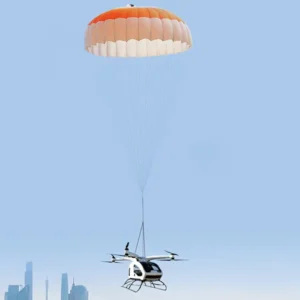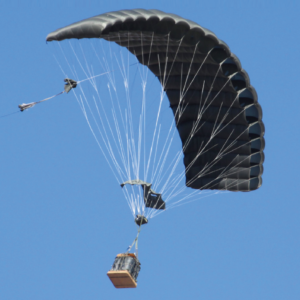The T181 Aircraft Parachute Recovery System (APRS) utilizes a Mechanical Activation Rocket to provide essential safety for fixed-wing aircraft in emergency situations. When an aircraft faces significant malfunctions or loss of control, the system slows the descent, helping to stabilize the flight and ensuring a controlled and safe landing.
| Model | T181-800 |
| Maximum Deployment Weight | 800 kg |
| Maximum Deployment Speed | 220 km/h |
| Ejection System Component Weight | 2.5kg |
| Ejection System Dimensions | Φ79x355mm |
| Parachute Component Weight | 12.5kg |
| Packaging Method | Soft Pack |
| Container Dimensions | 40x14x34 cm |
| Total System Weight | 15kg |
| Deployment Time (at 90 km/h level flight) | 6 s |
| Minimum Deployment Altitude (at 90 km/h level flight) | 140 m |
| Maximum Deployment Load | 6g |
| Maximum Descent Rate (at 1500 meters standard daytime temperature) | ≤7m/s (equivalent to a fall from a height of 2.5 meters) |
| Closure System | yes |
| Main Canopy Area | 175 ㎡ |
| Total Ejection System Thrust | 700NS |
| Rocket Motor Burn Duration | 1±0.1 s |
| Rocket Activation Method | Manual Activation |
| Operating Temperature Range | – 40°C – +60°C |
| Maintenance Interval | 6Years |
| System Service Life | 12 Years |




Contact Us
Copyright © 2021. All rights reserved. Cookie Policy | Privacy Policy
WhatsApp us